Prove the Set X Y Such That Xy is Continuous
Is the set $\{ (x,y) \in \mathbb{R}^2 : xy=1 \}$ open or closed in $\mathbb{R}^2$
Solution 1
Consider the complement of the second set $\{(x,y) : xy > 1\}$. We will show that $\{(x,y) : xy > 1\}$ is open.
Let $(x_0,y_0) \in \{(x,y) : xy > 1\}$. Then $x_0y_0 > 1$ so we can pick $\varepsilon > 0$ such that $x_0y_0 - \varepsilon > 1$.
Now consider the open ball $B((x_0, y_0), \delta)$ of radius $\delta > 0$ and let $(x,y) \in B((x_0, y_0), \delta)$.
We have $$|x| \le \|(x,y)\| \le \|(x,y) - (x_0,y_0)\| + \|(x_0,y_0)\| < \delta + \|(x_0, y_0)\|$$ so \begin{align} |xy - x_0y_0| &= |x(y-y_0)+y_0(x - x_0)| \\ &\le |x||y-y_0|+|y_0||x - x_0| \\ &\le \sqrt{|x|^2 + |y_0|^2}\sqrt{|x-x_0|^2 + |y-y_0|^2}\\ &< \sqrt{(\delta + \|(x_0, y_0)\|)^2 + |y_0|^2} \cdot \delta \end{align}
Pick $\delta$ small enough such that the last expression is $< \varepsilon$ and we will get $$xy = (xy - x_0y_0) + x_0y_0 \ge x_0y_0 - |xy - x_0y_0| \ge x_0y_0 - \varepsilon > 1$$
We conclude that $B((x_0, y_0), \delta) \subseteq \{(x,y) : xy > 1\}$ so $\{(x,y) : xy > 1\}$ is open.
An analogous argument shows that the third set $\{(x,y) : xy < 1\}$ is also open.
Now we have $$\{(x,y) : xy = 1\}^c = \{(x,y) : xy > 1\} \cup \{(x,y) : xy < 1\}$$ so the complement of the first set is also open.
Solution 2
" It's odd to visualize how there exists an open ball that is contained in xy<1 but doesn't contain any other points."
It's actually very easy.
$x_0y_0 < 1$ so $(x_0,y_0)$ is not on the curve $xy = 1$. So there is some distance between the point $(x_0, y_0)$ and the curve $xy=1$. Take a ball whose diameter is smaller than that distance. All the points in that ball aren't far enough to be that distance. so they are all not on the curve.
I guess you are thinking, if $x_0y_0 < 1$ it can get arbitrarily close to the curve and it can get close enough to the curve that nothing can get closer. Well, in that case get out a magnifying glass and zoom in so that that distance can appear large. Take a radius half that distance. Space (at least in the Euclidean $\mathbb R^n$ universe) is continous and there is no such thing as "so close nothing can be closer". We just have to zoom in with a magnifying glass and a distance of $\frac {1}{10^{100}}$ might as well be a million miles.
====
Okay to do these formally.
1) $A = \{(x,y)| xy =1\}$
$A^c = \{(x,y)|xy < 1\} \cup \{(x,y)|xy > 1\}$.
that's the union of two sets call them $M = \{(x,y)|xy < 1\}$ and $N = \{(x,y)|xy > 1\}$. If we can prove they are both open we are done.
Any my instinct as described above says that they are.
2) $B = \{(x,y)| xy \le 1\}$.
$B^c = \{(x,y)|xy > 1\} = N$.
So if we prove $N$ is open we are done.
3) $M = \{(x,y)| xy < 1\}$.
That's just $M$. If we prove it is open we are done.
So...
So we just have to prove $M$ and $N$ are open.
Solution 3
Let, $S=\{ (x,y) \in R^2 : xy<1 \}$ Suppose, $(x_0,y_0)\in S$. If $x_0y_0<0$ then it's easy to see that $S$ contains a nbd of $(x_0,y_0)$. Suppose, $x_0y_0\ge 0$ Let, $\epsilon<\min\{1,\frac{1-|x_0y_0|}{1+|x_0|+|y_0|}\}$. Then, for $|x-x_0|,|y-y_0|<\epsilon$ we have, $xy-1\le |x||y|-1<(|x_0|+\epsilon)(|y_0|+\epsilon)-1=|x_0y_0|-1+\epsilon(|x_0|+|y_0)+\epsilon^2<|x_0y_0|-1+\epsilon(|x_0|+|y_0|+1)<0$. Hence, $S$ contains a nbd of $(x_0,y_0)$.
Hence $S$ is open.
Related videos on Youtube
Comments
-
Determine whether the following sets are open or closed in $\mathbb{R}^2$ endowed with the eucledian metric
$1. \{ (x,y) \in \mathbb{R}^2 : xy=1 \}$
$2. \{ (x,y) \in \mathbb{R}^2 : xy\le1 \}$
$3. \{ (x,y) \in \mathbb{R}^2 : xy<1 \}$
The first two are not open because there is no ball that is contained in those sets and that doesn't contain an element from their complements. I'm having trouble expressing their complements as some type of union of open sets so I can prove that they are closed. The third one is a bit more interesting since the answer in my book says it's an open set. It's odd to visualize how there exists an open ball that is contained in $xy<1$ but doesn't contain any other points.
I would like to prove each of these a bit more rigorously and I have limited knowledge of topology/metric spaces. Hoping to prove it using only definition of open sets, (no sequences, continuity etc). Any hints or full answers are appreciated.
-
Hint: $f(x,y)=xy$ is a continuous function, so use the criterion of open preimage by a continuous function.
-
Try to visualize what the sets actually are (e.g. draw them on a piece of paper). That will make it somewhat easier to reason about their properties. For instance, on a simple drawing of set 2 one can see that your reasoning is flawed: the open ball centered at the origin with radius $1$ is contained in that set, among many other balls.
-
Well I know the first one is basically the function $\frac{1}{x}$, the second one is the same function + bunch of other points but I can't see any patterns here. Also as I mentioned no continuity or sequences please.
-
-
I was more worried about an intersection with $xy>1$. But I guess since they are also on some distance we would need to choose a minimum of the both and then we have the required ball.
-
Cant intersect $xy > 1$ without also intersecting $xy = 1$.
-
Could you explain this further? I'm having trouble understanding how you got this inequality. Mainly the terms in the square root. $\sqrt{|x|^2 + |y_0|^2}\sqrt{|x-x_0|^2 + |y-y_0|^2} < \sqrt{(\delta + \|(x_0, y_0)\|)^2 + |y_0|^2} \cdot \delta$
-
@DreaDk I already showed that $|x| < \delta + \|(x_0, y_0)\|$ so since the square root is strictly increasing we get $$\sqrt{|x|^2 + |y_0|^2} < \sqrt{(\delta + \|(x_0, y_0)\|)^2 + |y_0|^2}$$ The second term $\sqrt{|x-x_0|^2 + |y-y_0|^2}$ is simply equal to $\|(x-x_0,y-y_0)\| = \|(x,y) - (x_0, y_0)\|$ which is $< \delta$ because $(x,y) \in B((x_0,y_0), \delta)$.
-
Does the continuity of the function $f(\delta)=\sqrt{(\delta+\|(x_0,y_0)\|)^2+|y_0|^2}\cdot\delta$ guarantee the existence of such $\delta>0, \delta<\delta'(\varepsilon)$? I ask because I tried to explicitly find some $\delta$ via AG and $p-$ norms inequalities... and have failed so far.
-
@Invisible It is sufficient that $\lim_{\delta \to 0^+} \sqrt{(\delta+\|(x_0,y_0)\|)^2+|y_0|^2}\cdot\delta = 0$. To find an explicit $\delta$, you can set $$\delta := \min\left\{1, \frac{\varepsilon}{\sqrt{(1+\|(x_0,y_0)\|)^2+|y_0|^2}}\right\} > 0$$ because then we have $$\sqrt{(\delta+\|(x_0,y_0)\|)^2+|y_0|^2}\cdot\delta \le \sqrt{(1+\|(x_0,y_0)\|)^2+|y_0|^2}\cdot\frac{\varepsilon}{\sqrt{(\delta+\|(x_0,y_0)\|)^2+|y_0|^2}} = \varepsilon.$$
Recents
Source: https://9to5science.com/is-the-set-x-y-in-mathbb-r-2-xy-1-open-or-closed-in-mathbb-r-2
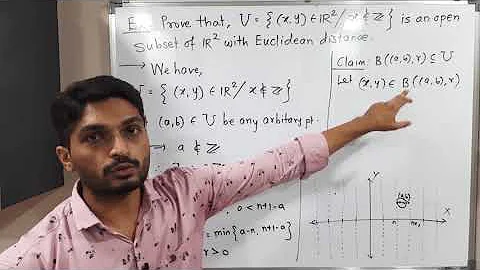
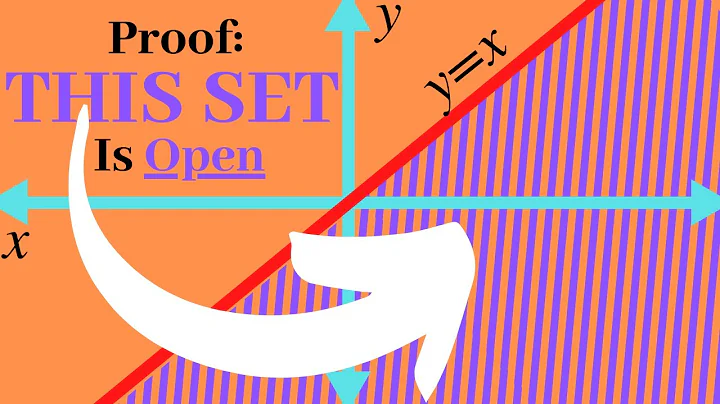
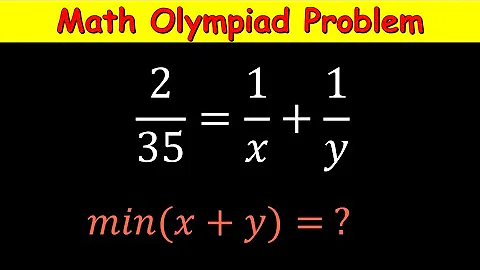
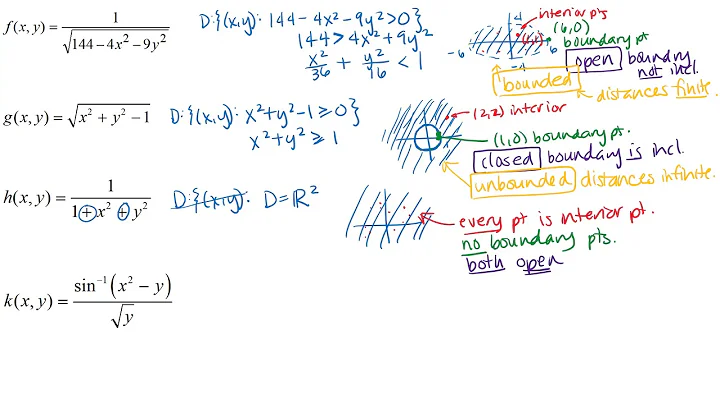
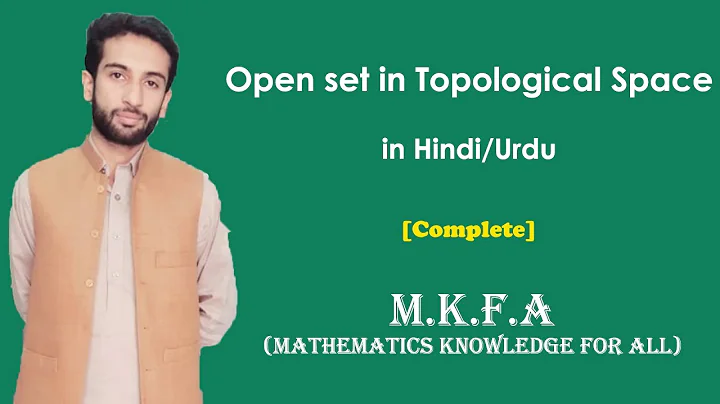
0 Response to "Prove the Set X Y Such That Xy is Continuous"
Post a Comment